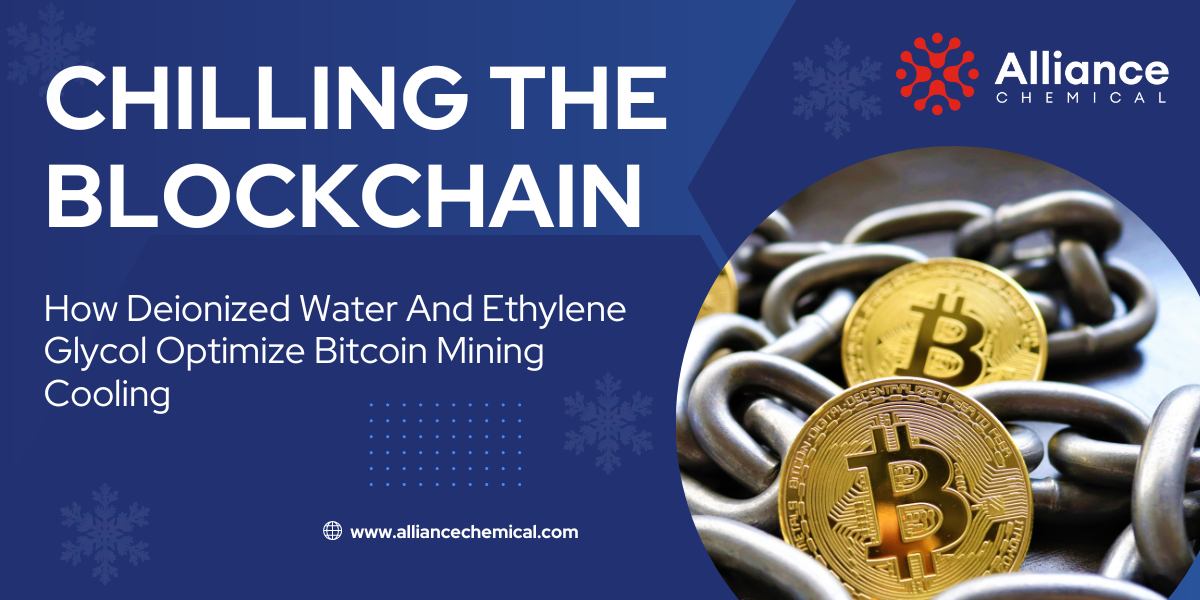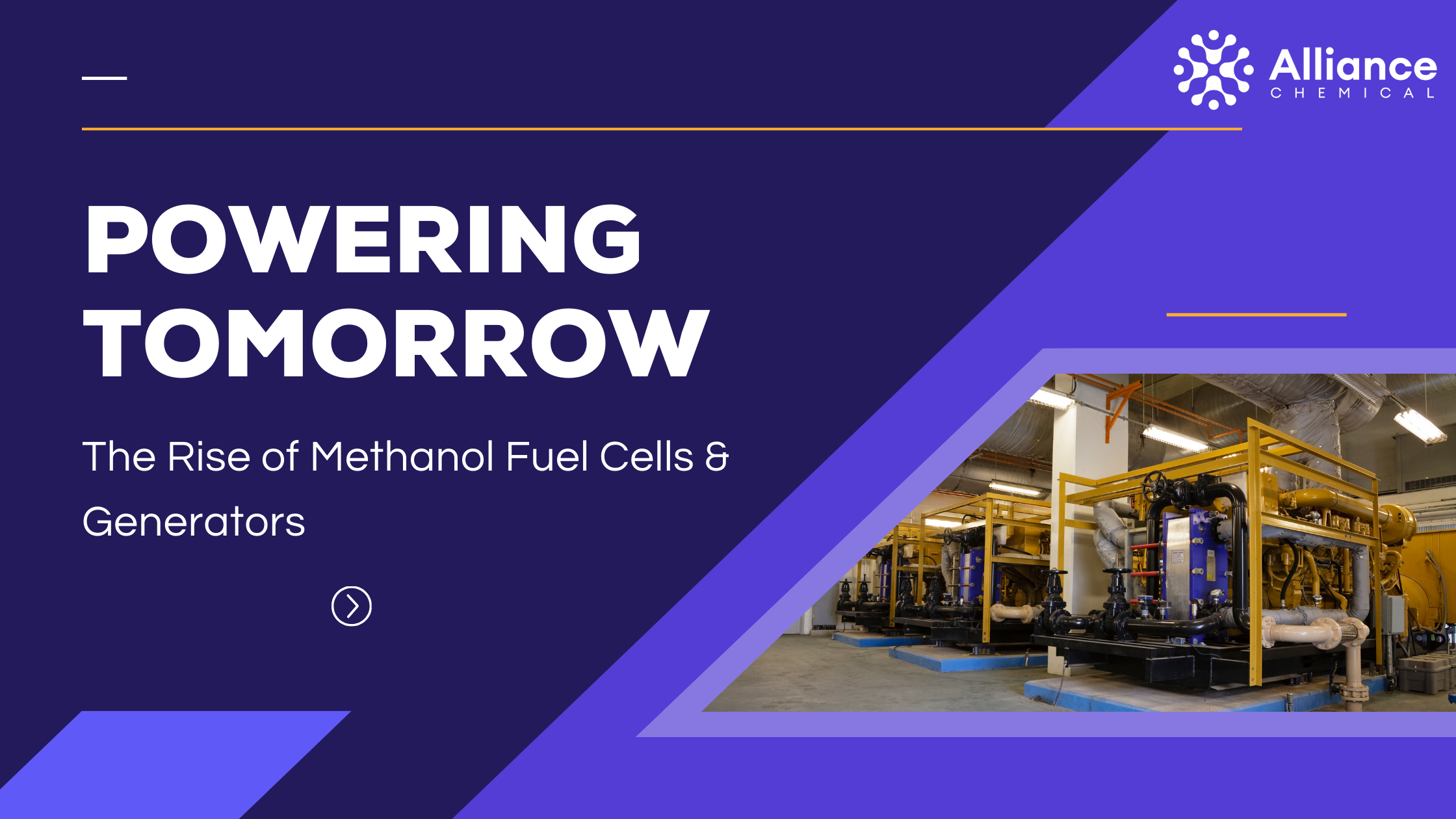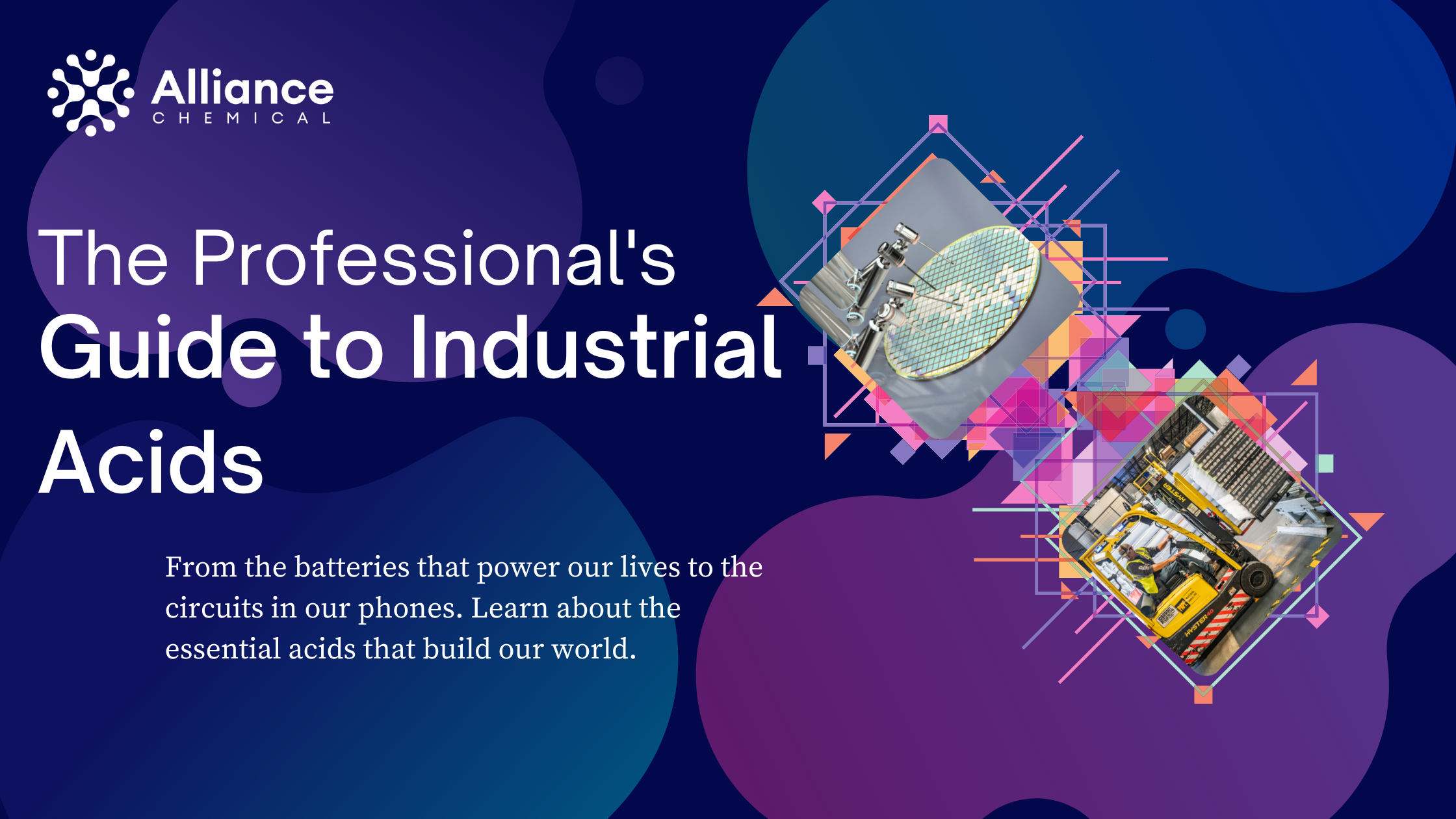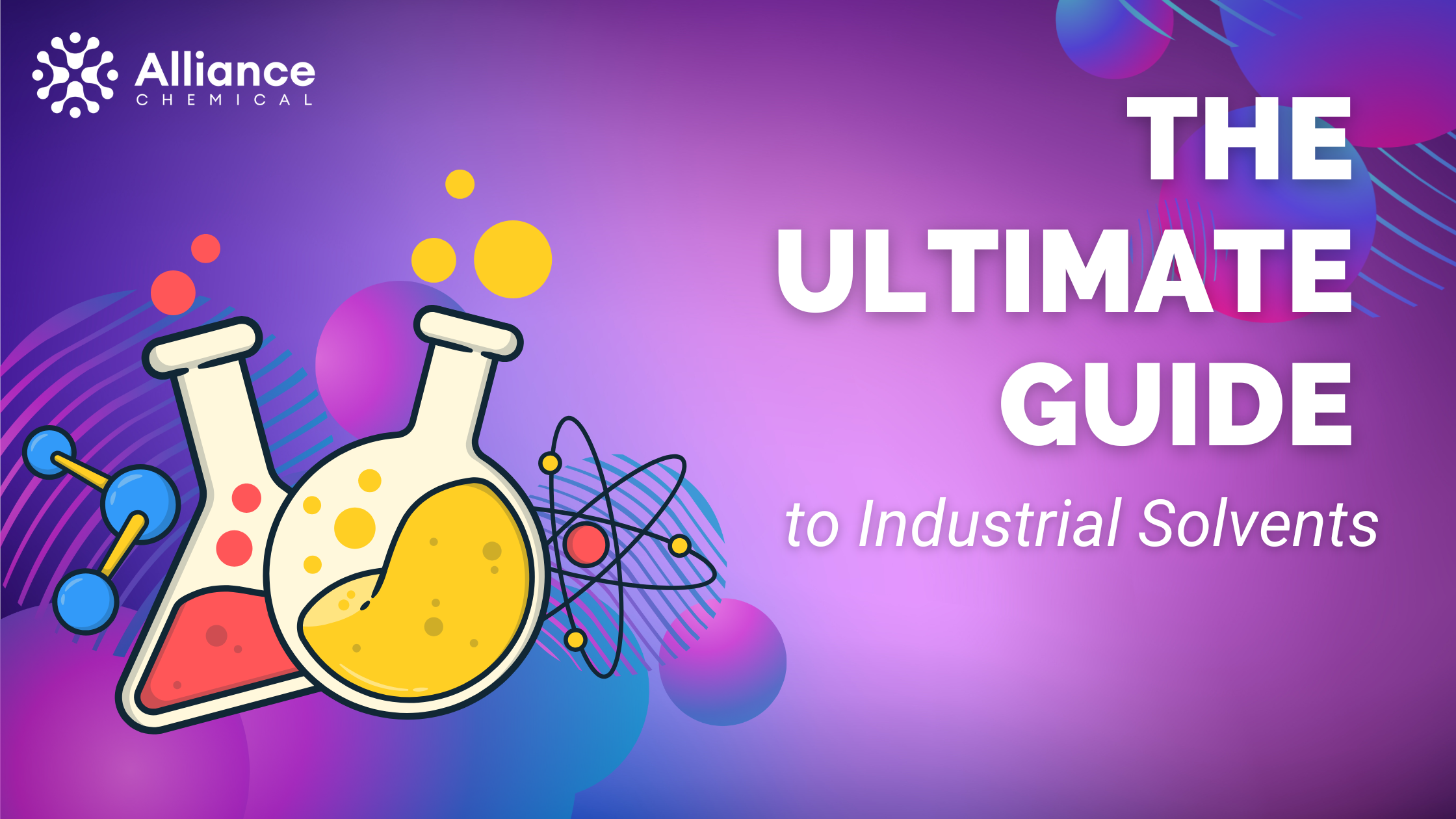
Chilling the Blockchain: How Deionized Water and Ethylene Glycol Optimize Bitcoin Mining Cooling
Table of Contents
Summary
In the hyper-competitive arena of cryptocurrency mining, profitability is a direct function of computational efficiency and operational uptime. The single greatest physical barrier to achieving both is thermal management. As ASIC and GPU technologies advance, the heat density they generate far exceeds the capabilities of traditional air cooling. This has driven the industry toward the superior thermodynamic efficiency of liquid cooling. This definitive technical guide explores the science behind different liquid cooling methodologies and details the critical role of high-performance fluids like Deionized Water and inhibited Glycol solutions in maximizing hash rates and ensuring long-term operational stability.
The Thermodynamic Imperative: Why Air Cooling is Obsolete for High-Density Mining
Traditional data center cooling relies on moving vast quantities of air. However, from a heat transfer perspective, air is a profoundly inefficient medium. It possesses a low specific heat capacity (it can't absorb much energy) and low density. In a densely packed mining farm, where ASICs can generate over 3500W of heat in a small chassis, this leads to several critical failures:
- Thermal Throttling: When an ASIC chip reaches its T-junction max (maximum safe operating temperature), firmware automatically reduces its clock speed and thus its hash rate. This is a direct, continuous loss of revenue.
- Hardware Degradation: Operating hardware at elevated temperatures accelerates electromigration and degrades silicon integrity, drastically shortening the lifespan of expensive mining equipment.
- Extreme Energy Overhead (PUE): A significant portion of a farm's energy bill is dedicated to running massive HVAC systems. The Power Usage Effectiveness (PUE) of an air-cooled facility can be 1.5 or higher, meaning 50% of the energy is wasted on cooling, not computing.
Liquid cooling solves these problems by using a fluid medium that is orders of magnitude more effective at absorbing and transporting heat, allowing for PUE values approaching a near-perfect 1.02.
Liquid Cooling Architectures: A Technical Breakdown
1. Direct-to-Chip (Water Block) Cooling
This method mounts a "water block"—a metal plate with micro-channels—directly onto the ASIC or GPU. A water-based coolant is circulated through these channels, absorbing heat via conduction, and then pumped to a radiator where the heat is dissipated. It is an effective upgrade but still relies on fans and ambient air for the final heat rejection.
2. Immersion Cooling: The Ultimate Solution
This is the most advanced method. Entire servers or ASIC miners are submerged in a tank of dielectric (non-conductive) fluid. This provides total, uniform heat absorption from every component. There are two main types:
- Single-Phase Immersion: The fluid always remains in a liquid state. It is circulated by pumps from the immersion tank to a heat exchanger (like a dry cooler or cooling tower) and back. This method is simpler, more reliable, and highly effective.
- Two-Phase Immersion: This uses an engineered fluid with a very low boiling point. The fluid boils directly on the surface of the chips, absorbing massive amounts of energy through latent heat of vaporization. The vapor rises, condenses on a cooled coil at the top of the tank, and "rains" back down as liquid. It is extraordinarily efficient but also more complex and expensive.
A Deep Dive into High-Performance Cooling Fluids
Deionized Water: The Pure Foundation
For any water-based (Direct-to-Chip) cooling loop, Deionized (DI) Water is the mandatory starting point. Tap water, with its dissolved mineral ions, is an electrolyte that will cause aggressive galvanic corrosion between the different metals in a system (e.g., copper water blocks and aluminum radiators). It will also form insulating mineral scale, crippling heat transfer. DI Water, which has had these ions removed via processes like ion-exchange resins, provides a pure, non-conductive, and non-corrosive base.
Glycols: The Essential Additive for Water-Based Systems
While DI water is a great heat carrier, it has limitations. Adding a high-purity glycol, like Semiconductor Grade Ethylene Glycol, is critical.
- Freeze & Boil-Over Protection: It extends the operating temperature range of the fluid. A 50/50 blend is a common standard.
- Corrosion Inhibition: This is the most crucial role. Uninhibited glycol is corrosive. Professionally formulated glycol solutions contain a package of chemical inhibitors (e.g., silicates, phosphates, OATs) that form a protective layer on metal surfaces and buffer the fluid's pH, preventing corrosion. For a pre-inhibited solution, consider a product like Inhibited Ethylene Glycol.
- Biocides: These additives prevent the growth of algae and bacteria (biofouling) within the loop, which can clog micro-channels.
Why Semiconductor Grade?
For mission-critical, high-value mining hardware, using a product like Semiconductor Grade Ethylene Glycol is a wise investment. This grade is filtered to an extremely fine level and has exceptionally low levels of metallic ions and other trace impurities, ensuring the highest level of protection for your equipment.
Practical Implementation and Fluid Maintenance
System Preparation
Before introducing a new fluid, the system must be thoroughly flushed with DI water to remove any manufacturing residues, old fluid, or contaminants. After filling, a pressure leak test is mandatory before powering on the electronics.
Fluid Maintenance Best Practices
A coolant is a consumable that requires periodic maintenance to protect your investment.
- Concentration Testing: Use a refractometer to periodically test the glycol-to-water ratio. If the concentration drops due to evaporation or topping off with water, freeze protection will be compromised.
- pH and Inhibitor Levels: Use pH test strips to monitor the fluid's acidity. A significant drop in pH indicates that the corrosion inhibitors are being depleted and the fluid is becoming acidic and corrosive. At this point, the fluid should be replaced.
- Filtration: Incorporate a fine-micron filter into your loop to capture any particulate matter before it can clog the micro-channels of your water blocks.
The ROI of Liquid Cooling: A Business Case
While the initial Capital Expenditure (Capex) for a liquid cooling system is higher than for air, the long-term Operational Expenditure (Opex) savings and performance gains create a powerful return on investment.
| Factor | Impact of Superior Liquid Cooling |
|---|---|
| Hash Rate | Increased by 10-50% or more by eliminating thermal throttling and enabling safe overclocking. |
| Hardware Lifespan | Significantly extended by operating chips at a stable, low temperature, reducing replacement Capex. |
| Energy Costs (PUE) | Dramatically reduced by eliminating or minimizing the need for energy-intensive air conditioning and fans. |
| Hardware Density | Allows for much denser packing of miners in a smaller footprint, reducing facility costs. |
MANDATORY Safety Protocols for Liquid Cooling
Liquid cooling systems combine high-voltage electricity with fluids. Failure to follow proper safety procedures can lead to equipment destruction, fire, or serious injury.
- Electrical Hazard: Even with low-conductivity fluids, leaks can be catastrophic. Ensure all fittings are professionally sealed and leak-tested for 24 hours before powering on. All electrical components must be properly grounded with GFCIs.
- Fluid Handling: Ethylene Glycol is toxic if ingested. Wear gloves and safety glasses during handling and clean up all spills immediately. Store securely.
- Material Compatibility: Ensure all components in your cooling loop (tubing, fittings, seals, pumps) are certified as compatible with your chosen fluid.









